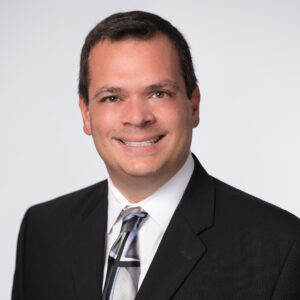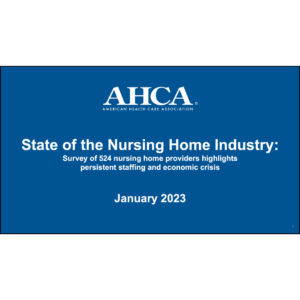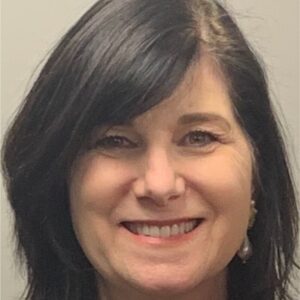New Study Indicates Nearly Half of the U.S. Faces a Caregiving Emergency
A new report, “America’s Unseen Workforce: The State of Family Caregiving,” identifies a looming caregiving crisis in the United States. The report, which is sponsored by Otsuka American Pharmaceutical, Inc., features a study conducted by Columbia University Mailman School of Public Health.
The study analyzed the urgency of local caregiving needs in each state, weighing factors like paid long-term care capacity and quality, overall support for aging, and population demographics. According to its findings, Alabama, Arkansas, Florida, Georgia, Louisiana, Nevada, South Carolina, and Tennessee are in a critical situation and require immediate action. An additional 16 states are high risk and require prompt attention. All in all, the study found that nearly half (48 percent) of U.S. states are on the brink of an unpaid caregiving emergency.
Given the healthcare worker shortage and the aging Baby Boomer population, the need to address the caregiving crisis is well-known. I Advance Senior Care spoke with industry experts who proposed potential solutions.
Understanding Factors Contributing to the Caregiving Emergency

Diane Ty, Managing Director of the Milken Institute Future of Aging Team
Diane Ty, Managing Director of the Milken Institute Future of Aging Team, explains that a perfect storm of demographic, economic, and policy factors are driving the caregiving emergency. She cites the fact that while the study found many states face a caregiving emergency, the crisis extends deeply into the paid direct care workforce, too.
“The fundamental drivers include our rapidly aging population, with more than 11,000 Americans turning 65 daily, and considering that 70 percent of people will need some form of long-term care at a point in their lives,” she explains. According to NIC research, the population of individuals age 80 and above will increase by over 55 percent, or 14.7 million, by 2035. During the same period, the total U.S. population will only grow by 4 percent. “This creates an unprecedented mismatch between care needs and the available workforce,” she says.
At the same time, the senior care industry faces a shortage of direct care workers. Ty cites chronically low wages, high turnover rates, and the physically and emotionally demanding nature of the work as contributing to the shortage.
She also highlights immigration as being a crucial yet underreported factor in the caregiving industry. “According to NIC analysis, immigrants make up 28 percent of our direct care workforce – a higher concentration than their 17 percent share of the overall U.S. workforce,” says Ty. “This includes 32 percent of the home care workforce, 21 percent of skilled nursing facility workers, and 24 percent of residential care (assisted living) workers. Current immigration restrictions and enforcement actions will exacerbate workforce shortages precisely at this time when we need to expand this essential workforce.”

Mark Sanchez, COO/Administrator at United Hebrew of New Rochelle
Mark Sanchez, COO/Administrator at United Hebrew of New Rochelle, explains that while well-intentioned, new federal mandates require senior care communities to meet staffing requirements based on patient acuity, rather than headcount. “It’s hard to meet those standards without more staff – especially in under-resourced or rural areas,” he says.
How the Senior Care Industry Can Prepare for the Increased Demand
With the Baby Boomer population aging, senior care communities will soon face steeply increased demand. Ty shares thoughts from Bob Kramer, a long-time Advisory Board member to the Milken Institute Future of Aging and Co-Founder of NIC. Kramer has outlined strategies to help the senior care industry prepare for workforce shortages:
- Expand the pool of workers to include older adults, the fastest growing part of the U.S. workforce with valuable skills and experience. [Develop] partnerships with healthcare systems for on-site clinics, collaboration with community organizations for volunteer programs, and development of tiered service models that match care intensity with resident needs and available staffing.
- Highlight purpose-driven work. Alongside efforts to recruit older adults, sharing stories of successful encore careers can help highlight the value and fulfillment of purpose-driven work. An example is a former truck driver who may no longer wish to do long-haul routes where he/she had episodic and transient connections but now drives a transportation van and connects daily with the residents.
- Prioritize training and offer a career path. Some operators are developing “grow your own” programs, offering education assistance and guaranteed employment. Investing in training and promoting from within makes a senior living community an appealing place to work.
- Leverage technology. Technology infrastructure investment is crucial, not just for efficiency, but to attract younger workers who expect modern workplace tools. This includes everything from electronic health records to communication platforms and scheduling applications, to anything that helps reduce the need to complete tasks to make caregiving jobs more attractive and manageable.
“Senior care communities must evolve now—not later,” says Sanchez. He references the integrated infrastructure of United Hebrew of New Rochelle as being a potential solution. The continuing care campus model allows residents to age in place as their needs change; interdisciplinary teams support them across assisted living, memory care, short-term rehabilitation, and skilled nursing.
“Behind the scenes, our clinical and administrative teams work in coordination to anticipate transitions, communicate across service lines, and ensure a seamless care experience for each resident,” says Sanchez. “To meet future demand, communities must develop this kind of integrated infrastructure—with both the physical environment and the human systems to support more complex and personalized care.”
Additional Solutions
In part two of this article, we explore innovative ways senior care communities are responding to staffing challenges to increase their capacity and ensure quality care for residents. Our industry experts will also share their solutions for addressing the caregiving emergency.

Paige Cerulli is a contributing writer to i Advance Senior Care.
Related Articles
Topics: Facility management , Featured Articles , Operations , Risk Management , Staffing











